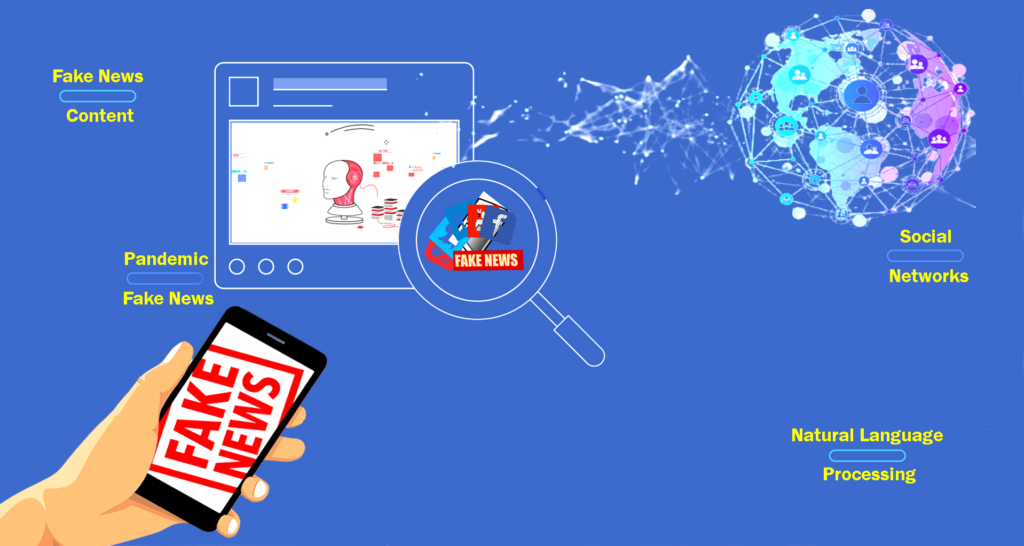STRATEGIES FOR EFFECTIVE GROWTH OF TABLEWATER BUSINESS IN AWKA SOUTH LOCAL GOVERNMENT AREA OF ANAMBRA STATE
BY
IFEYINWA ONYINYE OKEREKE
DOCTOR OF STRATEGIC MANAGEMENT AND
LEADERSHIP DEVELOPMENT (DSMLD)
scaredove81@yahoo.com
+2347069115087
2024
ABSTRACT
This study investigates the strategies for the effective growth of table water businesses in Awka South Local Government Area of Anambra State, focusing on the approaches adopted by sales representatives. The research aims to identify the current sales strategies in use, examine the challenges faced by sales representatives in implementing these strategies, and explore opportunities for enhancing sustainable growth in the table water business sector. Data were collected through structured surveys administered to sales representatives of table water businesses in the area. The study is guided by research questions on the effectiveness of current strategies, the challenges encountered, and potential opportunities for growth. Two hypotheses were tested to determine whether differences in sales strategies and challenges exist between male and female, as well as young and old sales representatives. The findings provide insights that could support the development of more targeted strategies for improving the growth and sustainability of tablewater businesses in Awka South.
Keywords: Sales Strategies, Table Water Business, Sustainable Growth, Sales Representatives, Awka South, Business Challenges, Gender differences /Age Related Challenges
- : INTRODUCTION
- Background of the Study
The table water business is a fast-growing industry in Nigeria, particularly in urban areas where access to clean and safe drinking water is limited. Anambra State, specifically the Awka South Local Government Area, is one of the regions where the table water business has experienced significant growth in recent years. The tablewater business in Awka South Local Government Area of Anambra State is densely populated and home to several tablewater businesses with a high demand for packaged water. As a result, many entrepreneurs have ventured into the table water business in the study area. However, despite the high demand, many businesses struggle to grow and remain competitive.
This paper focuses on the strategies for the effective growth of table water business in Awka South Local Government Area of Anambra State. The goal of this journal is to explore the challenges and opportunities facing table water in the area and to provide recommendations on how these businesses can grow and succeed in a competitive market. This study explores the sales strategies for the effective growth of the table water business in Awka South Local Government of Anambra State. The table water business in Awka South Local Government Area is thriving with an increasing number of water bottling companies and brands entering the market. The demand for table water has increased as consumers seek safe and hygienic drinking water. The competition in the market is stiff, with companies vying for market share through aggressive marketing campaigns and innovative packaging strategies.
This paper aims to provide valuable insights and recommendations for table water businesses in Awka South Local Government Area and other similar areas on how to effectively grow and succeed in the competitive table water market, by implementing the strategies outlined in this journal, and other previously journal written about it. The strategies used by the sales representatives of the various table water in Awka South Local Government Area of Anambra State to achieve the effective growth of the table water business in the study area.
In recent years, there has been a noticeable increase in the number of table water businesses in the area leading to competition and the need for effective growth strategies. As a result, there is a significant need for tablewater businesses in the study area to adopt innovative approaches to stay competitive and grow their market share.
1.2: Statement of Problem
The table water industry is a vital component of the beverage sector, serving as a convenient and essential source of potable drinking water for consumers. In Awka South Local Government Area of Anambra State, the demand for table water is increasing due to population growth, urbanization, and heightened awareness of the importance of clean drinking water. However, despite the promising market conditions, many tablewater businesses in the area face challenges that hinder their growth and success. One of the key challenges identified is the lack of effective sales strategies employed by Sales Representatives of the table water businesses in Awka South. According to Smith (2017), inadequate marketing efforts can limit a business’s reach and visibility among potential consumers, ultimately impacting sales and growth opportunities. To address this challenge, tablewater companies can implement targeted marketing campaigns, utilize social media platforms, and collaborate with
distributors to enhance brand awareness and attract new customers.
Another common challenge faced by tablewater businesses in the region is the limited distribution channels available for their products.
Research by Jones et al. (2019) emphasizes the importance of establishing a robust distribution network to ensure products reach customers efficiently and timely. Expanding distribution channels to supermarkets, convenience stores, and online platforms can help businesses tap into new markets and increase their customer base, thereby driving growth and revenue.
Furthermore, intense competition within the table water industry in Awka South poses a significant obstacle for businesses striving for growth. With numerous players vying for market share, Tablewater businesses must differentiate themselves through product quality, packaging innovation, and competitive pricing strategies. According to Brown et al. (2018), offering value-added services such as home delivery, bulk discounts, and customizable packaging can help businesses stand out in a crowded marketplace and attract loyal customers.
Regulatory compliance is another critical aspect that tablewater businesses in Awka South must navigate to ensure sustainable growth. Adhering to quality standards, safety regulations, and packaging requirements is essential to in still consumer trust and uphold industry credibility. By investing in quality control processes, obtaining necessary certifications, and conducting regular inspections, businesses can demonstrate their commitment to producing safe and reliable products, enhancing their reputation and competitiveness in the market.
The multifaceted challenges faced by table water businesses in Awka South Local Government Area of Anambra State underscores the importance of implementing effective strategies to drive growth and success in the industry. By addressing issues such as marketing deficiencies, distribution limitations, competitive pressures, and regulatory compliance, businesses can position themselves for sustainable growth, increased market share, and long-term viability in the dynamic table water market landscape.
1.3: PURPOSE OF THE STUDY: The purpose of this study is to investigate the strategies that can be employed by sales representatives for the survival and growth of table water businesses in Awka South Local Government Area of Anambra State.
1.4: OBJECTIVES
1. To identify the current sales strategies employed by table water businesses in Awka South Local Government Area.
2. To investigate challenges faced by sales representatives of the table water businesses in implementing effective sales strategies in the study area.
3. To examine the opportunities in implementing the sales strategies for improving sustainable growth for tablewater businesses in the study area.
1.5: RESEARCH QUESTIONS:
1. What are the current sales strategies adopted by table water businesses in Awka South Local Government Area?
2. What are the main challenges faced by the tablewater businesses in implementing effective sales strategies.
3. What are the opportunities in implementing the sales strategies for sustainable growth of tablewater businesses in the study area?
HYPOTHESES
HO1: There is no significant difference between male and female sales representatives with regard to strategies for the growth of table water businesses in Awka South Local Government Area.
HO2: There is no significant difference between young and old sales representatives regarding the challenges faced by table water businesses in the study area
HO3: There is no significant difference between young and old sales representatives regarding the opportunities in implementing the sales strategies for sustainable growth of table water businesses in the study area.
2.0: LITERATURE REVIEW:
Ogbuji, Anyanwu, and Onah, (2011) in their ‘Empirical Study of the Impact of Branding on Consumer Choice for Regulated Bottled Water in Southeast, Nigeria employed the use of a survey design and probability sampling technique of Stratified Random Sampling adopted in this study.
The population was the senior staff academic and senior non-teaching staff.
A probability sampling technique of Stratified Random Sampling was used to select 374 participants for the study. Data was analyzed using, simple percentages, bar charts, and pie charts were used. For the test of hypotheses and analysis/interpretation of data, simple and stepwise multiple regression techniques were used.
This research work is therefore an investigation into the impact of branding on consumer choice for bottled water, with a special focus on the contributory roles of its various elements in impacting consumer behavior.
It was discovered among other things, that of all the elements of branding, company-of-make, and packaging play a greater role than brand name and brand mark, in terms of influencing consumer choice for bottled water. It was against this backdrop that this research work proposed two models namely; Review of Consumer Buying Behaviour Processes 1 and 2. It equally recommended among other things that firms should focus more attention on the company name and packaging but should also integrate the brand name and brand mark as supportive elements in fashioning an effective branding strategy for beating
Gjr, (2023), assessed the effect of product innovation on the sales growth of Monas table water company Gombe. The study utilized the Meta-analysis of literature from independent primary studies, sourced from current journal articles, textbooks, and previous research of scholars related to the study. The study concluded that companies should always innovate their products to attract more customers which will bring about an increase in sales. Relying on older means of advertisement may also decrease sales rates in the company because some customers are digital.
Francesco Scalamonti (2021) using a Meta-analysis, surveyed the Italian bottled water industry with a quantitative approach The results confirm that the operative volumes depend positively and significantly on itself lagged by one order and the other explicative variables up cited. In conclusion, the study captures the market dynamics of the industry in the long-term, and it brings to the attention of managers, researchers, and business economists an industry much more important for socio-economic implications and environmental impacts that can cause the consumption of bottled water that policymakers cannot afford to ignore.
Agada and Ahmad, (2015), assessed the extent of compliance to ethical standards in the production of Bottled water in Nigeria, with particular reference to selected bottled water companies to determine whether producers of bottled water are aware of the existence of ethics, the level of compliance to ethical standards required by the regulatory agency, and whether consumption of bottled water reduces health hazards or not. They made use of a survey design. Data for the study were obtained from Primary Sources and analyzed using frequency tables and Pearson Chi-Square to test the three hypotheses of the study. The results showed that producers of bottled water are significantly aware of the existence of
business ethics and are also complying with required ethical standards set by the regulatory agencies that consumption of bottled water significantly reduces health hazards such as deadly waterborne diseases such as typhoid fever, diarrhea, and measles have been drastically reduced to the barest minimum. It recommended awareness of business ethics and consistent compliance with the required standards as required by the regulatory agencies be upheld and sustained over time without compromising by water-producing firms.
Bello, Shuangqin, and Dalibi (2017), studied ‘Economic impacts of packaged and bottled water businesses in Nigeria.’ Meta-analysis was employed for this study to examine and discuss the Economic Impacts of Packaged and Bottled Water Businesses in Nigeria to identify the Economic Impacts and to extend the existing literature on the Economic Impacts of Packaged and Bottled Water Businesses in Nigeria. The main data sources were journals, conference/seminar/workshop papers, textbooks, newspapers, magazines internet sources, etc., which were used to review literature in the Water Business field. It was found that the economic impacts of packaged and bottled water businesses identified in this work were as follows: an entity that provides business opportunities; it engages small-scale packaged and bottled water manufacturers; it provides employment opportunities; it provides profits and wages; it offers a medium of economic growth; it provides a source of revenue to the government e.g. Tax etc. and it provides water at affordable prices. These impact Nigerians economically and also the business environment from which they operate.
2.1: Summary of Literature:
Five empirical studies were reviewed, four focused on table water in Nigeria, out of which one is in the South East of Nigeria, but not in Awka. Unlike the current study, three of the studies reviewed applied the use of Meta-analysis of literature, while like the current study, the others used surveys. Although various aspects of the table water business were reviewed none of the studies were reviewed; and, no study known to the researcher dwelt onStrategies for effective growth of table water business in Awka South Local Government Area Of Anambra State. This is the gap this study filled.
3.0: METHODOLOGY:
3.1:Research Design
Design of the Study: This study adopted a descriptive non-experimental research design carried out ex-post facto research design, which implies ‘after the fact’ as no variable is controlled or manipulated (Nwankwo and Emunemu 2015:147), because only one single event- investigation of the strategies that can be employed by sales representative for the survival and growth of table water businesses, which has already happened, was focused on.
- : Area of Study
The area of study is Awka in Awka South Local Government Area of Anambra State, where a lot of table water companies are found.
3.3: Population of the Study
The population of this study will include all 250 sales representatives of Table Water Businesses operating in Awka South Local Government Area of Anambra State. This includes (74.2%) 186 male and 31 (25.8%) female sales representatives across different age groups, reflecting a diverse representation of individuals involved in the table water business.
3.4. Sample Size and Sampling Technique
A sample of 163 sales representatives was selected from the target population using a stratified random sampling technique. The stratification will be based on gender (74.2%) (male and 66 (25.8%) female) and age groups (young and old) to ensure that the sample is representative of the diverse characteristics of sales representatives in the table water business. The random selection within each stratum ensured that each sales representative had an equal chance of being included in the sample.
3.5. Instrument for Data Collection: The primary instrument for data collection is a structured questionnaire designed specifically for this study. The questionnaire is divided into four sections: Section A collects demographic information of the respondents, Section B has three clusters focusing on, the current sales strategies employed by the table water businesses (six items), challenges faced by sales representatives in implementing effective sales strategies (seven items) and the opportunities for improving sustainable growth through the implementation of sales strategies (eight items), respectively. The 24-item questionnaire (Appendix I) includes both closed-ended questions for quantitative data and open-ended questions to allow respondents to provide more detailed responses with response patterns of Strongly Agree, Agree, Disagree, Strongly Disagree, and Neutral.
3.6. Procedure for Data Collection:
Data collection was carried out by the researcher with the assistance of trained research assistants. The questionnaires were administered in person to the selected sales representatives, and the research assistants provided clarification where necessary. Respondents were given sufficient time to complete the questionnaires, which were collected on the same day to ensure a high response return rate.
3.7: Validation of the Instrument: Three experts were requested to ascertain the appropriateness and clarity of the items of the instruments to ascertain if they measured what they purported to measure.
Their comments, suggestions, and observations were taken into consideration in the production of the final draft of the instruments. (App I).
3.8: Reliability of the Instrument: The instruments were trial tested through a pilot study, on 10 respondents at Aqua Rafa, another table water company in Enugu state, which is outside the study area. The internal consistency of the instrument was computed using Cronbach Alpha method which yielded 0.88 for the entire instrument, which was therefore considered reliable enough for the study.
3.9: Method of Data Analysis
The data collected were analyzed using both descriptive and inferential statistics. Descriptive statistics, such as frequency counts, percentages, mean, and standard deviation, were used to summarize and describe the data. For the inferential analysis, independent samples t-tests will be conducted to test the hypotheses on the differences between male and female sales representatives and young and old sales representatives regarding the strategies for growth and challenges faced in the table water business. The decision was reached using a criterion mean score of 2.50 for the research questions. This implies that any means below 2.50 was taken to mean NOT Accepted, while any means of 2.50 and above were Accepted for the same reason. Independent Sample Test of Levene’s Test for Equality of Variances was adopted in the t-test for Equality of Means at a 95% level of probability or 0.05 level of significance. The levels of significance were determined with the P-table value about the 0.05 level of significance. This implies that when the P-value is below 0.05 level of significance, when t- the calculated is smaller than t- table (1.96) it implies a Significant Difference between the means tested, thus the Null Hypothesis was Not Accepted. On the other hand, when the P-value is higher than 0.05 level of significance when t- calculated is greater than t- table (1.96), it implies No Significant Difference between the means tested. Therefore, the Null Hypothesis was tested using t-test analysis.
4.0: RESULT:
The data generated for the study were analyzed using Descriptive Statistics and SPSS Statistical Analysis. The results are presented in six tables in line with the research questions and hypotheses that guide the study.
4.1: Data Overview
The dataset includes demographic information of the respondents, their experience, and insights regarding Sales Strategies, Challenges, and Opportunities in the table water business. For analysis, I grouped the data into key clusters
Table 1: Demographics Figure
Table 1.1 Gender Distributions
| GENDER DISTRIBUTION | MALE | FEMALE |
| NUMBER / PERCENTAGE | 89: 74.2% | 31: 25.8% |
Table1.2: Age Group
| AGE GROUP | 18-45 YEARS | 46 YEARS AND ABOVE |
| NUMBER / PERCENTAGE | 102: 85% | 18: 15.% |
Table 1.3: Years of Experience
| YEARS OF EXPERIENCE | LESS THAN 6 YEARS | MORE THAN 6 YEARS |
| NUMBER / PERCENTAGE | 73: 56.5% | 57: 43.5% |
Demographics:
The table water business in the sample is dominated by Younger, Male Sales Representatives /Entrepreneurs (85%). The majority have less than six years of experience, with the bulk of the respondents (102) between 18-45 years suggesting younger sales representatives in the study. Most respondents (73) have less than 6 years of experience, suggesting that most of the sales representatives are inexperience in the table water business in the study area.
Research Questions One: What are the current sales strategies adopted by table water businesses in Awka South Local Government Area?
Key: A= ACCPT; NA=Not Accepted. E= Effective; NE= Not effective
| Table 1: Current sales strategies that can be adopted by table water businesses for growth of table water business Sales strategies that can be employed in table water business | Effectiveness of the strategies | |||||||
| S/No | N=150 | Mean | SD | Dec | Mean | SD | Dec. | |
| 1 | Direct sales to consumers | 2.56 | 1.21 | A | 3.12 | 1.04 | E | |
| 2 | Sales through retailers | 1.23 | 0.64 | NA | 2.01 | 0.12 | NE | |
| 3 | Online marketing and sales | 2. 59 | 1.11 | A | 3.03 | 1.44 | E | |
| 4 | Discounts and promotions | 1.50 | 0.13 | NA | 2.49 | 1.51 | NE | |
| 5 | Door-to-door sales | 1.51 | 0.27 | NA | 2.44 | 1.36 | NE | |
| 6 | Marketing and Promotion | 2.38 | 1.03 | NA | 2.55 | 1.07 | E | |
| 7 | Product Quality Improvement | 2.69 | 1.28 | A | 3.00 | 1.81 | E | |
| 8 | Expanding Distribution Channels | 2 .55 | 1.23 | A | 3.10 | 2.03 | E | |
| 9 | Customer Service Enhancements | 1.72 | 1.14 | NA | 3.02 | 1.05 | E | |
| 10 | Pricing Strategies | 2.62 | 1.27 | A | 2.75 | 1.62 | E | |
| 11 | Innovation and Product Diversification Key: SD =Standard Deviation: Dec= Decision; A= Accepted; NA= Not Accepted; VE= Very Effective; E= Effective: NE=Not Effective | 2.56 | 1.30 | A | 3.04 | 1.85 | E | |
Table 1 shows that items 1, 3, 7, 8, 10, and 11 have criterion means of 2.50 and above. This implies that the respondents Accept Direct sales to consumers (item 1); Online marketing and sales (item 3); Door-to-door sales (item 5); Product Quality Improvement (item 7); (item 8); Pricing Strategies (item 10); and Innovation and Product Diversification (item 11) as Current sales strategies that can be adopted by table water businesses for sustainable growth of table water business. The table further shows that the respondents perceive; Direct sales to consumers (item 1); Online marketing and sales (item 3); Marketing and Promotion (item 6); Expanding Distribution Channels (item 8); Customer Service Enhancements (item 9); Pricing Strategies (item 10); and Innovation and Product Diversification (item 11) as Effective sales strategies as their means are between 2.49 and 3.49.
Hypothesis 1: There is no significant difference between male and female sales representatives about strategies for the growth of table water businesses in Awka South Local Government Area.
Table 2 shows that the mean values are, 0.74 and 0.11 for males and females respectively with 1,96 t-value and 0.60 t-calculated showing No significant difference between the two means. The hypothesis that There is no significant difference between male and female sales representatives regarding strategies for the growth of table water businesses in Awka South Local Government Area was therefore Accepted.
Table 2:
T-test analysis of significant differences between male and female sales representatives about strategies for the growth of table water businesses in Awka South LGA.
| Group | N | Mean | t-value | df | t-Cal | Sig. | Dec | |||||
| Male | 89 | 0.74 | 1.96 | 122 | 0.60 | 0.05 | Not Sig./Accept | |||||
| Female | 31 | 0.11 | ||||||||||
Key: SD= Standard Deviation, df= Degree of Freedom; t-cal ; t -table; t-cal= t- Calculated; Dec= Decision
Research Questions 2: What are the main challenges faced by tablewater businesses in implementing effective sales strategies?
| Table 3: Challenges Facing Table Water Business, | |||||||||
| Challenges in my table water Level of Effectiveness | |||||||||
| NO | ITEMS | Mean | SD | Decision | Mean | SD | Decision | ||
| 1 | Regulatory Issues | 2.85 | 1.41 | A | 2,55 | 1.43 | Effective | ||
| 2 | Supply Chain Disruptions | 2.44 | 1.25 | NA | 1.87 | 0.65 | Ineffective | ||
| 3 | Lack of Skilled Labour | 2.64 | 1.21 | A | 2.22 | 1.13 | Ineffective | ||
| 4 | Market Demand Fluctuations | 3.01 | 2.43 | A | 1.24 | 0.08 | Ineffective | ||
| 5 | Competition | 3 52 | 2.52 | A | 1.05 | 0.02 | Ineffective | ||
Key: SD= Standard deviation: A= Accepted: NA= Not accepted.
Table 3 shows that the respondents Accepted the following as challenges facing table water businesses in Awka, Issues; Market Demand Fluctuations; Lack of Skilled Labour
, and Competition. The table further shows that only Regulatory Issues were perceived to be effective in implementing the strategies to avert the challenges affecting sustainable sales of tablewater.
Hypothesis Two: There is no significant difference between young and old sales representatives regarding the challenges faced by table water businesses in the study area
Table 4:
t-test Analysis of significant differences between young and old sales representatives about the challenges faced by table water businesses in the study area
| Group | N | Mean | t-value | df | t-Cal | Sig. | Dec | |||||
| Young Sales Rep | 102 | 0.85 | 1.96 | 118 | 0.55 | 0.05 | Not Sig./Accept | |||||
| Old Sales Rep | 18 | 0.15 | ||||||||||
Key: SD= Standard Deviation, df= Degree of Freedom; t-cal ; t -table; t-cal= t- Calculated; Dec= Decision
Table 4 shows that the mean value is, 0.85 and 0.15 for young and old sales representatives respectively with 1.96 t-value and 0.55 t-calculated, also showing No significant difference between the two means. The hypothesis that there is no significant difference between young and old sales representatives about the challenges faced by table water businesses in the study area, was therefore Accepted.
Research Question Three: What are the opportunities in implementing the sales strategies for sustainable growth of tablewater businesses in the study area?
Table 5:
Opportunities in implementing sales strategies for sustainable growth of table water businesses and level of the opportunities
| Opportunities In Implementing Sales Strategies Level of Opportunities | |||||||
| ITEMS | Mean | SD | Dec. | Mean | SD | Decision | |
| 1 | Expanding Market Demand | 3.32 | 2.11 | Accept | 3.00 | 2.01 | High |
| 2 | Partnerships with Retailers | 3.42 | 2.10 | Accept | 3.21 | 2.18 | High |
| 3 | Government Support Programs | 3. 04 | 2.04 | Accept | 3.51 | 2.02 | Very High |
| 4 | Technological Advancements (e.g. online sales) | 3.33 | 2.24 | Accept | 3.55 | 2.03 | Very High |
| 5 | Financial Support | 2.50 | 1.01 | Accept | 3.65 | 2.07 | Very High |
| 6 | Training and Development Programs | 2.56 | 1.02 | Accept | 3.32 | 2.04 | High |
| 7 | Improved Infrastructure | 3.20 | 2.11 | Accept | 3.02 | 2.01 | High |
| 8 | Marketing and Promotional Support | 2 50 | 1.01 | Accept | 2.65 | 2.07 | High |
Table 5: indicates that the respondents Accept all the items, Expanding Market Demand (item 1);Partnerships with Retailers (item 2);Government Support Programs (item 3); Technological Advancements (e.g online sales) (item 4);Financial Support (item 5); Training and Development Programs (item 6); Improved Infrastructure (item 7); Marketing and Promotional Support (item 8)with criterion means 2.50 and above as opportunities in implementing sales strategies for sustainable growth of table water businesses and level of the opportunities. The table also indicates that the levels of opportunity for, Government Support Programs (item 3); Technological Advancements (e.g online sales) (item 4);Financial Support (item 5), are Very High but High for the others; Expanding Market Demand (item 1);Partnerships with Retailers (item 2);Training and Development Programs (item 6); Improved Infrastructure (item 7); Marketing and Promotional Support (item 8).
Hypothesis Three: There is no significant difference between young and old sales representatives concerning the opportunities in implementing the sales strategies for sustainable growth of table water businesses in the study area.
Table 4:
t-test Analysis of significant differences between young and old sales representatives concerning opportunities in implementing sales strategies for sustainable growth of table water businesses.
| Group | N | Mean | t-value | df | t-Cal | Sig. | Dec | |||||
| Young Sales Rep | 102 | 0.85 | 1.96 | 118 | 0.62 | 0.05 | Not Sig./Accept | |||||
| Old Sales Rep | 18 | 0.15 | ||||||||||
Key: SD= Standard Deviation, df= Degree of Freedom; t-cal ; t -table; t-cal= t- Calculated; Dec= Decision
Table 4 portrays the mean values 0.85 and 0.15 for young and old sales representatives, respectively, with 1.96 t-values and 0.62 t-calculated, also showing no significant difference between the two means. The hypothesis that there is no significant difference between young and old sales representatives about opportunities in implementing sales strategies for sustainable growth of table water businesses was, therefore, Accepted.
Summary of findings: This study’s summary of findings was presented in accordance with the research questions and hypotheses that guided the study.
Research Question One: What are the current sales strategies adopted by table water businesses in Awka South Local Government Area?
Finding 1: The current sales strategies adopted by table water businesses in Awka South Local Government Area are;
- Direct sales to consumers (x=2.56)
- Online marketing and sales (x=2.59)
- Product Quality Improvement (x=2.69)
- Expanding Distribution Channels(x=2.55)
- Innovation and Product Diversification (x=2.56)
The following sales strategies are found to be effective ingrowing the table water business in Awka South LGA.
- Direct sales to consumers (x=3.12);
- Online marketing and sales (x=3.03);
- Marketing and Promotion (x=2.55)
- Product quality improvement(x=3.00)
- Expanding Distribution Channels (x=3.10)
- Customer Service Enhancements (x=3.02)
- Pricing Strategies (x=2.75) and
- Innovation and Product Diversification (x=3.04)
Hypothesis One: There is no significant difference between male and female sales representatives about strategies for the growth of table water businesses in Awka South Local Government Area.
Finding 2: The hypothesis that there is no significant difference between male and female sales representatives about strategies for the growth of table water businesses in Awka South Local Government Area, isAccepted.
Research Question 2: What are the main challenges faced by tablewater businesses in implementing effective sales strategies?
Finding 3: The main challenges faced by tablewater businesses in implementing effective sales strategies include,
- Regulatory Issues (x=2.85) were found to be effective in implementing the strategies to avert the challenges affecting sustainable sales of tablewater.
- Market Demand Fluctuations (x=3.01);
- Lack of Skilled Labour (x=2.65) and
- Competition (x=3.52) but, was found ineffective in implementing the strategies to avert the challenges affecting sustainable sales of table water.
Hypothesis Two: There is no significant difference between young and old sales representatives about the challenges faced by table water businesses in the study area.
Finding 4: The hypothesis that there is no significant difference between young and old sales representatives about the challenges faced by table water businesses in the study area is Accepted.
Research Question 3: What are the opportunities in implementing the sales strategies for sustainable growth of tablewater businesses in the study area?
Finding 5: The opportunities in implementing the sales strategies for sustainable growth of table water businesses in the study area include,
- Expanding market demand (x=3.32) was found to be high.
- Partnerships with retailers (x=3.42), were found to be high.
- Government support programs (x=3.04), were found to be very high.
- Technologicaladvancements(e.g.online sales) (x=3.33), were found to be very high.
- Financial support (x=2.50), was found to be very high.
- Training and development programs (x=2.56), were found to be high.
- Improved infrastructure (x=3.20), was found to be high.
- Marketing and promotional support (x=2.50), was found to be high.
- Hypothesis Three: There is no significant difference between young and old sales representatives concerning the opportunities in implementing the sales strategies for sustainable growth of table water businesses in the study area.
Finding 6: The hypothesis that there is no significant difference between young and old sales representatives with regards to the opportunities in implementing the sales strategies for sustainable growth of table water businesses in the study area is Accepted.
DISCUSSION:
Current Sales Strategies Adopted by Tablewater Businesses In Awka South Local Government Area: Tablewater businesses in Awka South LGA, like most businesses, adopt sales strategies for growth. As Nigeria faces the problem of table water, it has since become a lucrative business in the area. To this end marketers adopt various strategies including Direct sales to consumers; Online marketing and sales; Product Quality Improvement; Expanding Distribution Channels Innovation and Product Diversification. Consequently, they make a lot of sales.
This finding supports Jones et al. (2019) on the importance of establishing a robust distribution network to ensure products reach customers efficiently and timely; Smith (2017) and Brown et al. (2018), inadequate marketing efforts can limit a business’s reach and visibility among potential con the need for good marketing strategies to enable distribution channels and customer satisfaction.
Main challenges faced by the table water businesses in implementing effective sales strategies: Like most Nigerian businesses, table water businesses also face a lot of challenges in implementing effective sales strategies, such include, and Regulatory Issues, Market Demand Fluctuations and Lack of Skilled Labour as well as Competition also make things difficult for tableware businesses. However, though a challenge, competition is found ineffective in implementing the strategies to avert the challenges affecting sustainable sales of table water. This finding supports Bello, Liu Shuangqin, and Dalibi (2017) who observed that numerous challenges can mar success in water businesses.
Opportunities in implementing the sales strategies for sustainable growth of table water businesses in the study area: Despite the challenges there are many opportunities in implementing the sales strategies for sustainable growth of table water businesses. These opportunities keep the business going. They include Expanding market demand, Partnerships with retailers; Government.
Support programs, Technologicaladvancements(e.g.online sales; Financial support; Training and development programs; Improved infrastructure Marketing, and promotional support. It is not surprising that marketers will find the above opportunities high especially in a country where business people have little or no such opportunities. It is a pity that Nigeria especially Anambra state lacks a basic amenity like water, which should be one of the priorities of the government, leaving the lot and health of the people in the hands of the struggling table water marketers. The World Bank while commenting on the world water challenge stated that access to water supply services and sanitation is a major factor in reducing child mortality (Bello, Liu Shuangqin, and Dalibi(2017)). The people of Awka LGA should therefore not lack water as water is found to be essential for life, the most common, most widely distributed, and most useful liquid on earth the most precious natural resource that exists on our planet (). From the above finding, the water supply situation in Nigeria has not yet met the Millennium Development Goal (MDG) target of 75% coverage for safe drinking water, so there is much more to do in Nigeria in this regard, This study agrees with Ogbuji, Chinedu & Anyanwu, Aham & Onah, Julius. (2011) and Gjr Publication. (2023) that there are a lot of opportunities in employing adequate strategies in marketing table water of which branding is highly recommended.
CONCLUSION: The study concludes that the strategies adopted by sales representatives are effective growth of table water business in Awka south local government area of Anambra state. A lot of challenges confront the business but there are high opportunities for the growth of the business.
Implications: The Anambra state government Federal government of Nigeria and the Anambra state government, in particular, should leverage the opportunities in implementing the sales strategies for sustainable growth of tablewater businesses and ensure that tablewater is made a lucrative business so as to achieve the Sustainable Development Goal (SDG) 6 of ‘Clean Water and Sanitation,’ by 2030.
Contributions To Knowledge;
- This study has brought to light the various strategies that can be adopted for effective tablewater businesses. Entrepreneurs interested in table water business can employ the use of these strategies in their businesses.
- This study has also contributed to solving the problem of the dearth of literature in this area.
- It has x-rayed to need for Nigeria and Anambra state governments to leverage the opportunities in implementing the sales strategies for sustainable growth of tablewater businesses and ensure that tablewater is made a lucrative business so as to achieve the Sustainable Development Goal (SDG) 6 of ‘Clean Water and Sanitation,’ by 2030.
.
Recommendations
Based on the findings of the study, the following recommendations are made.
- Addressing Challenges and Leveraging on the Strategies and Opportunities:The Nigerian government and Anambra state government in particular, must endeavor to address the challenges and leverage the strategies and opportunities to achieve the Sustainable Development Goal (SDG) 6 of ‘Clean Water and Sanitation,’ by 2030.
- Adoption of Digital Marketing Strategies; Tablewater businesses should explore and fully integrate digital marketing strategies to reach a broader audience and improve customer engagement.
- Capacity Building for Sales Representatives: Business owners and sales representatives should undergo formal training in marketing and sales strategies to improve their skills and execution of their jobs. Workshops and seminars organized by local business associations or government agencies could be beneficial.
- Expanding Direct Sales and Retailer Partnerships, which are perceived as effective sales strategies for the growth of table water business in the study area. Businesses should pursue Partnerships with retailers and other service providers to increase market penetration and visibility, as collaboration with supermarkets, restaurants, and event centers could help boost sales.
- Addressing Regulatory Issues and Competition challenges, perhaps through collective action or lobbying for better policies will also boost the business in the study area.
- Expansion and Diversification: Tablewater businesses should explore expanding their market to neighboring towns and states. They should also consider diversifying their product ranges to include health-focused options such as vitamin-enriched or flavored water to meet emerging consumer demands.
- By implementing these recommendations, table water businesses in Awka South Local Government Area can overcome their current challenges and achieve sustainable growth in a highly competitive market.
REFERENCES:
Agada, J., A. & Ahmad, A., Y. (2015), Assessment of compliance to ethical standards in bottled water producing firms in Nigeria: A study of selected bottled water companies. International Journal of Public Administration and Management Research (IJPAMR), Vol. 3, No 1, July, 2015. Website: http://www.rcmss.com. ISSN: 2350-2231 (Online) ISSN: 2346-7215 (Print) 3(1):29-36 29 Research Centre for Management and Social Studies (RCMSS)
Ogbuji, C., Anyanwu, A., Onah, J., (2011). An Empirical study of the impact of branding on consumer choice for regulated bottled water in Southeast, Nigeria. International Journal of Business and Management. 6. 1833-8119. 10.5539/ijbm.v6n6p15
Gjr Publication. (2023). Product innovation and sales growth; A study of Monas Table Water Company Gombe. 3(6):14-18. 10.5281/zenodo.10090739
Francesco Scalamonti (2021) Bottled water industry: A quantitative study approach. Italian Review of Agricultural Economics 76(2): 31-44. DOI: 10.36253/rea-13095
Bello, A. S., Liu Shuangqin and Dalibi, S. G., (2017) Economic impacts of packaged and bottled water businesses in Nigeria. International Journal of Advanced Engineering and Management Research Vol. 2 Issue 3, 2017 www.ijaemr.com ISSN: 2456-3676.
Nwakwo, J. I. and Emunemu, B. O., (2015). Handbook on Research in Education and Social Sciences: A Resource for Theses, Dissertations and Projects. Giraffe Books, Nigeria.
Agu, O. (2019). Entrepreneurial Strategies and Business Growth: A Study of Small and Medium Enterprises in Nigeria. Journal of Business Management, 5(2), 45-59.
Ajayi, S. & Ugochukwu, J. (2018) The Role of Marketing in the Growth of Small Businesses in Nigeria: A Case Study of Table Water Businesses. African Journal of Business and Economics, 10(1), 72-85.
Anyanwu, A. (2015). Marketing Principles and Management. Owerri: Avan Global Press.
Eze, S. & Okechukwu, P. (2020). Sales Strategies and Performance of Table Water Companies in South-Eastern Nigeria. Journal of Business Strategies, 7(3), 33-49.
Kalu, F. & Nwosu, C. (2017). Sustainable Business Growth: Key Strategies for SMEs in Nigeria. International Journal of Small Business and Entrepreneurship, 8(2), 92-105.
Ogbonna, C. & Nwachukwu, T. (2016). Challenges and Opportunities in Small Business Marketing: A Study of Table Water Businesses in Awka South. Journal of Nigerian Business Studies, 3(2), 50-64.
Onyeka, G. & Okoro, A. (2021). Strategic Marketing and the Growth of SMEs in Nigeria. Business Development Review, 6(1), 15-30.
APPENDIX: MY INSTRUMENT
SALES REPRESENTATIVES STRATEGIES FOR EFFECTIVE TABLE WATER BUSINESSES GROWTH QUESTIONNAIRE ( SRSETWBG).
INSTRUCTIONS TO RESPONDENTS
I am a student at Learn to Live Business School (LLBS), pursuing a doctorate program. You are kindly requested to be objective (honest) in your answers. Please note that there are no implications whatsoever with your responses, which will be used for research purposes only. There are no right or wrong answers just be honest. There are four options Kindly TICK only one: Kindly answer ALL the questions.
SA = Strongly Disagree
A = Agree
N = Neutral
D = Disagree
SD = Strongly Disagree
And Where Applicable;
VE = Very effective
E = Effective
N = Neutral
IE = Ineffective
VIE = Very ineffective
NC = Not Challenging
SC = Slightly Challenging
MC = Moderately Challenging
VC = Very Challenging
EC = Extremely Challenging
Thank You
OKEREKE IFEYINWA ONYINYE
LLBS/DOC/5212/01223/003
DOCTORATE DEGREE CLASS
STRATEGIES FOR EFFECTIVE GROWTH OF TABLE WATER BUSINESS IN AWKA SOUTH LOCAL GOVERNMENT AREA OF ANAMBRA STATE
SECTION 1: RESPONDENTS’ DEMOGRAPHICS
1. Gender: [ 89 ] Male [ 31 ] Female
2. Age Group: [ 102 ] 18-45 years [ 18 ] 46 years and above
3. Years of Experience in the Table Water Business: [73] Less than 6 years [57] More than 6 years
| Cluster 1: Current sales strategies that can be adopted by tablewater businesses for sustainable growth of table water businesses | ||||||||||||||||||||||||||||||||||
| The following sales strategies can be currently employed in my table water business, with the following effectiveness. | ||||||||||||||||||||||||||||||||||
| S/No. | SA | A | D | N | SD | VE | E | ME | IE | VIE | ||||||||||||||||||||||||
| Direct sales to consumers | ||||||||||||||||||||||||||||||||||
| Sales through retailers | ||||||||||||||||||||||||||||||||||
| Online marketing and sales | ||||||||||||||||||||||||||||||||||
| Discounts and promotions | ||||||||||||||||||||||||||||||||||
| Door-to-door sales | ||||||||||||||||||||||||||||||||||
| Marketing and Promotion | ||||||||||||||||||||||||||||||||||
| Product Quality Improvement | ||||||||||||||||||||||||||||||||||
| Expanding Distribution Channels | ||||||||||||||||||||||||||||||||||
| Customer Service Enhancements | ||||||||||||||||||||||||||||||||||
| Pricing Strategies | ||||||||||||||||||||||||||||||||||
| Innovation and Product Diversification | ||||||||||||||||||||||||||||||||||
| Others (please specify) | ||||||||||||||||||||||||||||||||||
| Cluster 2: I face the following challenges in my table water business, which I perceive as follows | ||||||||||||||||||||||||||||||||||
| Competition | SA | A | N | D | SD | NC | SC | MC | VC | EC | ||||||||||||||||||||||||
| Regulatory Issues | ||||||||||||||||||||||||||||||||||
| Supply Chain Disruptions | ||||||||||||||||||||||||||||||||||
| Lack of Skilled Labour | ||||||||||||||||||||||||||||||||||
| 12. | Market Demand Fluctuations | |||||||||||||||||||||||||||||||||
| 13. | Other (please specify) _____ | |||||||||||||||||||||||||||||||||
| 15. | Competition | |||||||||||||||||||||||||||||||||
| 16. | Regulatory Issues | |||||||||||||||||||||||||||||||||
| Others Specify……………………….. | ||||||||||||||||||||||||||||||||||
| Cluster 3: I perceive the following Opportunities in implementing sales strategies for sustainable growth of table water businesses and the level of the opportunities are as follows: | ||||||||||||||||||||||||||||||||||
| SA | A | D | N | SD | VE | E | ME | IE | VIE | |||||||||||||||||||||||||
| Expanding market demand | ||||||||||||||||||||||||||||||||||
| Partnerships with retailers | ||||||||||||||||||||||||||||||||||
| Government support programs | ||||||||||||||||||||||||||||||||||
| Technological advancements (e.g., online sales) | ||||||||||||||||||||||||||||||||||
| Financial support | ||||||||||||||||||||||||||||||||||
| Training and development programs | ||||||||||||||||||||||||||||||||||
| Improved infrastructure | ||||||||||||||||||||||||||||||||||
| Marketing and promotional support | ||||||||||||||||||||||||||||||||||
| Others (Please specify): _______ | ||||||||||||||||||||||||||||||||||
| Expanding market demand | ||||||||||||||||||||||||||||||||||
- In your opinion, what improvements or changes could be made to enhance the growth of table water businesses in Awka South Local Government Area?
Answer:——————————————————————————————————————————————————————————————————————————————————————————————————————————————————————————————————————————————————————-
- What role do sales representatives play in overcoming challenges and implementing
effective strategies?
Answer:——————————————————————————————————————————————————————————————————————————————————————————————————————————————————————————————————————————————————————–
Thank you for your participation!











